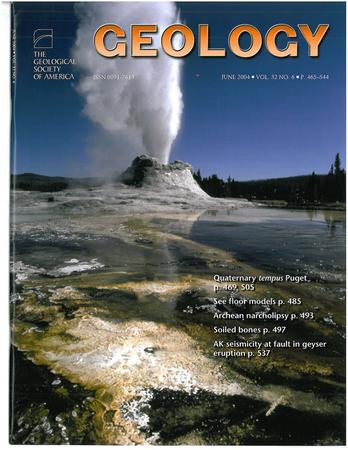Tides-generated nonlinear internal waves transport sediment in the deep-sea bottom boundary layer
IF 4.6
1区 地球科学
Q1 GEOLOGY
引用次数: 0
Abstract
As a globally distributed high-energy oceanic motion, the ability of nonlinear internal waves (NLIWs) to penetrate the thermocline into the deep-sea bottom boundary layer (BBL) and lead to sediment transport remains controversial due to the scarcity of direct in situ observations. To address this issue, we deployed a tripod-mooring system at 2011 m water depth on the northern slope of the South China Sea, an area renowned for its vigorous NLIWs and significant terrigenous sediment input to the deep sea. Our observation confirms that NLIWs begin shoaling and breaking, thereby triggering sediment resuspension, when reaching the deep slope rather than being confined to the shelf and upper slope. Two distinct types of NLIWs originating from the Luzon Strait exhibit different effects on the deep-sea BBL. Type-A NLIWs, whose induced flows partially align with the background flows, amplify BBL flows and contribute 50.28% of the total sediment flux despite accounting for only 1.63% of the observation time. In contrast, type-B NLIWs, whose induced flows oppose the background flows, weaken BBL flows and inhibit 29.22% of the total sediment flux. Notable linear correlations between NLIWs’ amplitude and the BBL temperature, flow velocity, and shear velocity has been established for the first time, which will help to advance the parameterization of NLIW-BBL interactions and provide crucial insights into the role of NLIWs in deep-sea sediment transport.潮汐产生的非线性内波在深海底边界层输运沉积物
作为一种全球分布的高能海洋运动,非线性内波(NLIWs)穿透温跃层进入深海底边界层(BBL)并导致沉积物输运的能力由于缺乏直接的原位观测而一直存在争议。为了解决这个问题,我们在南中国海北坡2011米水深处部署了一个三脚架系泊系统,该地区以其强大的NLIWs和大量的陆源沉积物输入深海而闻名。我们的观察证实,当NLIWs到达深坡而不是局限于陆架和上坡时,NLIWs开始浅滩化和断裂,从而引发沉积物再悬浮。源自吕宋海峡的两种不同类型的非利流对深海BBL的影响不同。a型NLIWs的诱导流部分与背景流对齐,放大了BBL流,虽然只占观测时间的1.63%,但贡献了50.28%的总输沙通量。b型NLIWs的诱导流与背景流相反,减弱了BBL流,抑制了29.22%的总输沙通量。首次建立了NLIWs振幅与BBL温度、流速和剪切速度之间的显著线性相关关系,这将有助于推进NLIWs -BBL相互作用的参数化,并为NLIWs在深海沉积物输运中的作用提供重要的见解。
本文章由计算机程序翻译,如有差异,请以英文原文为准。
求助全文
约1分钟内获得全文
求助全文
来源期刊

Geology
地学-地质学
CiteScore
10.00
自引率
3.40%
发文量
228
审稿时长
6.2 months
期刊介绍:
Published since 1973, Geology features rapid publication of about 23 refereed short (four-page) papers each month. Articles cover all earth-science disciplines and include new investigations and provocative topics. Professional geologists and university-level students in the earth sciences use this widely read journal to keep up with scientific research trends. The online forum section facilitates author-reader dialog. Includes color and occasional large-format illustrations on oversized loose inserts.
 求助内容:
求助内容: 应助结果提醒方式:
应助结果提醒方式:


